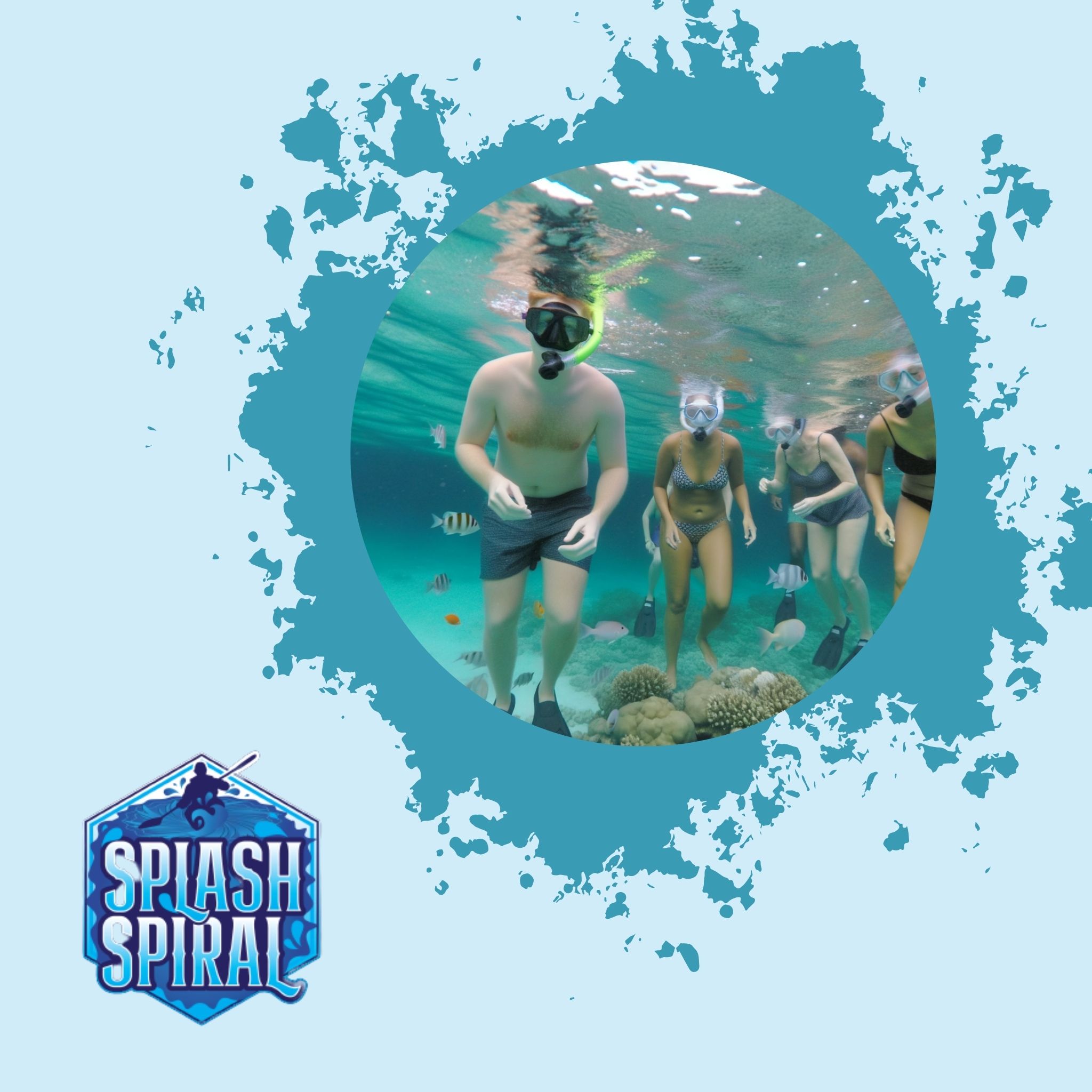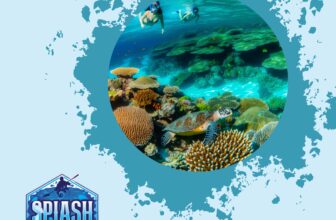
Southeast Asia is a paradise for snorkeling enthusiasts, offering crystal clear waters, bustling marine biodiversity, and beautiful coral reefs. Whether you're a beginner snorkeler or just getting started, this guide covers the top spots you shouldn’t miss.
Introduction
Snorkeling along the coral reefs of Southeast Asia gives you a unique window into an underwater world teeming with tropical fish and vibrant marine life. This guide aims to point you towards the best snorkeling spots in the region so you can experience the incredible biodiversity without getting overwhelmed. Whether you’re new to snorkeling or looking to dip your fins for the first time, these top locations will give you a memorable, hassle-free introduction to the wonders beneath the waves.
Why Choose Southeast Asia for Snorkeling?
Whether you’re dipping your toes into snorkeling for the first time or have some experience, Southeast Asia offers an unparalleled playground. So, why should you pack your snorkel and fins and head here?
- Rich Marine Biodiversity: Southeast Asia is a treasure trove of marine life. You’ll encounter vibrant coral gardens, schools of tropical fish, and even the occasional turtle or reef shark. This region is home to some of the most varied and dense underwater ecosystems on the planet.
- Clear Waters: Visibility is key when snorkeling, and the waters of Southeast Asia are some of the clearest you’ll find. This makes it easier to spot and appreciate the intricate details of the underwater world, enhancing your overall experience.
- Accessible Locations: Unlike remote locations that require extensive travel and planning, many top snorkeling spots in Southeast Asia are relatively easy to reach. Popular tourist destinations like Thailand, the Philippines, and Indonesia have well-developed infrastructures, including guided tours and equipment rentals.
For more on affordable snorkeling adventures in Southeast Asia, check out our budget snorkeling guide.
Exploring the Top Snorkeling Locations
1. The Similan Islands, Thailand
- Marine Life: Expect to see vibrant coral reefs and a plethora of tropical fish species.
- Accessibility: Well-connected by boat tours and suitable for beginners.
- Highlights: Clear waters and abundant marine biodiversity make this spot a must-visit.
2. Raja Ampat, Indonesia
- Marine Life: Known for its exceptional marine diversity, including numerous fish species and unique coral formations.
- Accessibility: May require a bit more travel but absolutely worth the effort.
- Highlights: Raja Ampat offers an otherworldly snorkeling experience in one of the most biodiverse marine areas globally.
3. Palawan, Philippines
- Marine Life: Home to expansive coral gardens and a wide variety of tropical fish.
- Accessibility: Easily accessible with multiple snorkel tour options available.
- Highlights: The beauty of Palawan’s underwater world is unmatched, making it a favorite among snorkelers.
4. Mabul Island, Malaysia
- Marine Life: Notable for muck diving but equally impressive for snorkeling with various species of small marine creatures.
- Accessibility: Accessible with a mix of accommodation options ranging from budget to luxury.
- Highlights: The mix of unique underwater creatures and vibrant corals makes Mabul Island stand out.
For more information on advanced snorkeling spots, visit our advanced snorkeling guide.
Tips for Beginner Snorkelers
Gear Essentials
Alright, let’s talk gear. You don't need to break the bank to get started, but having the right equipment is crucial.
-
Mask, Snorkel, and Fins: These are your essentials. Make sure your mask fits snugly without being too tight. A good fit can prevent water from leaking in and fogging up. A dry snorkel, which has a valve on top to keep water out, can be really helpful for beginners. Fins should be comfortable and not too tight; they'll make swimming easier and help you navigate through the water more efficiently.
-
Wetsuits and Rashguards: Even in warm waters, a rashguard can protect you from the sun and potential jellyfish stings. If you’re snorkeling in cooler waters or tend to get cold easily, consider wearing a light wetsuit. Comfort is key here—if you’re freezing or sunburned, you won’t enjoy your adventure.
-
Underwater Camera: Capture your first underwater memories. You don’t need a fancy setup—a simple waterproof action camera will do. Many marine creatures are curious and might just get close enough for that perfect shot.
Safety Considerations
Safety first, folks. Snorkeling is fun, but the ocean is a powerful force.
-
Stay Aware of Tides and Currents: Always check the tidal charts and sea conditions before heading out. If the water looks rough or the currents are strong, it's best to wait for calmer conditions. Your safety is more important than any snorkeling trip.
-
Buddy System: Never snorkel alone. Having a buddy means someone is there to help if you run into trouble. Plus, it’s more fun to share the experience with a friend.
-
Environment Awareness: The coral reefs are delicate ecosystems. Avoid touching or standing on them. Not only can this harm the coral, but it can also injure you. Watch where you kick your fins to avoid damaging marine life.
Best Times to Snorkel
Timing your snorkeling trip can make all the difference.
-
Seasonal Considerations: Aim for the dry season wherever you’re headed. Clear weather usually means calmer seas and better visibility. Rainy seasons can stir up the water, making it murky and less enjoyable for snorkeling.
-
Time of Day: Early mornings are often the best time to snorkel. The waters are typically calmer, and marine life is more active. Plus, you’ll beat the crowds and have more of the underwater world to yourself.
Following these tips can help you get the most out of your snorkeling adventures. Remember, the most important thing is to relax and enjoy the incredible underwater biodiversity that Southeast Asia has to offer. Happy snorkeling!
Conservation Efforts
-
Marine Protected Areas (MPAs): Many of these snorkeling locations fall within Marine Protected Areas, which are crucial for maintaining the health and biodiversity of coral reefs. These zones are managed with stricter regulations, meant to reduce human impact and allow marine ecosystems to thrive.
-
Respect Marine Life: One of the core principles of snorkeling is to observe without disturbing. Touching coral reefs or marine creatures can harm them and even disrupt entire ecosystems. Always maintain a respectful distance from wildlife and avoid stirring up sediment which can smother coral.
-
Eco-friendly Practices: Small actions can have significant impacts. Use reef-safe sunscreen to prevent harmful chemicals from bleaching the coral. Reduce your plastic footprint by using reusable water bottles and bags. Every piece of trash avoided is a step towards cleaner oceans and healthier marine habitats.
By adhering to these conservation practices, you'll help ensure that Southeast Asia’s vibrant underwater ecosystems remain pristine and vibrant for future generations to enjoy.
Conclusion
Snorkeling in Southeast Asia offers a treasure trove of underwater experiences that are both accessible and unforgettable. By choosing the right spots and following essential tips, even beginners can dive into this stunning underwater realm confidently. From the vibrant coral reefs of the Similan Islands to the underwater diversity of Raja Ampat, each destination offers something unique and awe-inspiring. Remember to prioritize safety and responsible snorkeling practices to help preserve these beautiful marine environments for future generations. So grab your gear, follow our guide, and get ready to explore the mesmerizing underwater world of Southeast Asia.
For a more comprehensive guide on snorkeling and diving, don't forget to explore our snorkeling and diving section on our website.







